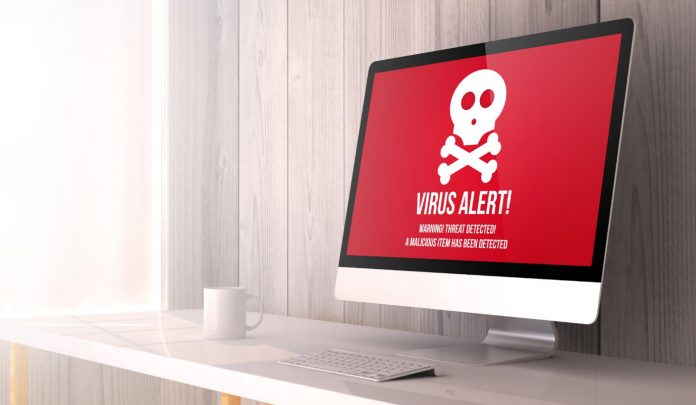The most damaging computer virus ever reported cost $38 billion in total damages. That’s none other than the MyDoom virus, launched and initiated back in 2004. What’s even worse is that many other viruses, like the SoBig variant, cost billions in damages, too.
Such huge losses occur as viruses can damage both computer hardware and software. They can delete files, reformat hard drives, sap resources, and lead to a cycle of computer crashes. Worse, they can steal sensitive and financial information.
For those reasons, it’s imperative you know how to check for viruses on your desktop or laptop.
To that end, we created this guide listing the top tips on how to know if your computer has a virus. Read on to discover what steps to take and how to eliminate them.
- Keep an Eye On Your Device’s Current Activities
One of the first steps on how to check if your computer has a virus is to open the device’s native resource utility. In Windows computers, this utility is Task Manager, while Macs have Activity Monitor. Both tools allow you to check all active programs, processes, and services.
When checking for potential infections, it’s best to quit all active programs first. This way, it’ll be easier for you to go through the list that shows up on Task Manager or Activity Monitor. As you check the list, be on the lookout for any unfamiliar names.
If you find any, do a quick online search to see if that name pops up in known virus lists. If it is, you’re more than likely to find instructions online on removing that infection. Better yet, download an anti-virus program to eliminate all threats to your devices.
- Mind Your Downloads and Peripherals
Traditionally, computer viruses proliferated through portable media and storage devices. In many cases, connecting an infected USB drive spreads the virus to another computer. The same goes when plugging infected smartphones into desktops or laptops.
Today, though, virus infections also occur through internet downloads. These include email or direct messaging attachments and software downloads.
If you’ve noticed erratic behavior in your computer after a download, it may be due to a virus.
Again, you confirm this by checking Task Manager or Activity Monitor. If you see any suspicious or unknown names in the list, quit and uninstall them right away. It’s also a smart idea to uninstall the app or file you believe to be the virus vector.
- Check Your Web Browser for Unfamiliar Extensions
Browser extensions are small software modules that extend the capabilities of browsers. They give browsers extra features, letting users control website behavior on their end.
For example, some extensions can check your spelling and grammar as you type. Others allow you to modify and tailor the appearance of web pages. Many also let you integrate your browser with other apps or services.
Unfortunately, expansive extension use has made them a prime vector for malware. A perfect example is what happened to Chrome and Edge in December 2020. Back then, analysts discovered 28 infected extensions in these two.
Those 28 extensions placed as many as three million people at risk. Some of the programs had malware designed to steal personal user data. Viruses can do this by mining saved log-in credentials or mimicking keystrokes.
Having said that, your browsers are some of the first things to check for unfamiliar programs. First, look at all the existing and enabled extensions you have on each of your browsers. Then, immediately uninstall anything you’re not familiar with.
- Monitor Your Browser’s Behavior
Browser hijackers aren’t actual viruses; they’re potentially unwanted programs (PUPs). However, once they embed themselves in your browser, they can lead to virus infections.
For example, a browser hijacker can alter a browser’s settings, changing its home page. That page can then be full of harmful links, infecting your device if you click them by accident.
A hijacker can also infect your computer with loads of aggressive pop-ups and ads. Clicking on these can lead to unwanted redirects to malware-infested sites.
If any of your browsers exhibit such behavior, a hijacker, such as Search Baron, has likely infected it. Either way, you can get rid of it by uninstalling all processes associated with the hijacker.
- Use a Dedicated Anti-Virus Program
Anti-virus is software designed to detect, prevent, and eradicate computer viruses. It works by scanning every inch of a computer, allowing it to unearth malicious files. If it detects a threat, it gives the user the option to clean, quarantine, or delete the infection.
A computer-wide scan using anti-virus software is the fastest way to check for viruses. This way, you can check all your internal and external drives, including all files and folders. They can scan your browsers for potential dangers, too.
What’s more, comprehensive virus protection programs help prevent viruses in the first place. They function as a barrier that filters incoming data to your computer. If they detect suspicious aspects in the data, they will prevent it from getting into your system.
Some recommended anti-virus programs include McAfee, Norton, Malwarebytes, and BitDefender. Bonus points for these, as they also come with free versions, but be sure to consider their paid services, too.
Extra pro tips: cleaning only removes the virus from the file, letting you keep the cleaned file. By contrast, quarantining moves the file to a safe location so that the virus can’t do more damage. Finally, deleting removes both the virus and the infected file.
If you need to keep the infected file because you need to retrieve its contents, go with cleaning. Quarantine a file if you’re not sure if it’s harmful, and then clean it if you need to restore it. As for all infected files that you no longer need, just delete them all.
Follow All the Tips in This Guide on How to Check For Viruses
Keep in mind that many types of malware, including viruses, can result in identity theft. That alone should prompt you to be more cautious of your digital activities.
So, as early as now, carry out all the steps we discussed in this guide on how to check for viruses in your computer. The sooner you do, the sooner you can protect your personal and financial data from criminals.
Ready for more educational tech and lifestyle guides? Have a look at our most recent news and blog updates then!






